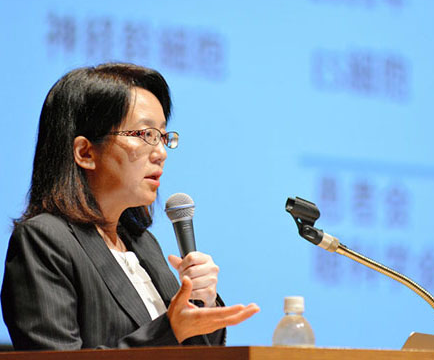Masayo Takahashi, Professor at the Riken Public Institute and “an international pioneer in clinical trials based on iPS stem cells[1]“, has announced that, “in future, all diseases could potentially be treated (…) with iPS cells, even if only minimal effects are initially observed”. Even if they do not provide a cure, these pluripotent stem cells, created from mainly adult skin cells, could “improve a patient’s quality of life”. She explained that, “initially”, she “didn’t see how iPS cells could help to combat [degenerative diseases for which no treatment exists, such as lateral amyotrophic sclerosis] this condition, which affects the whole body (…) “. Since doctors “told her that even if patients only manage to move a finger, this nevertheless constitutes progress, allowing them to communicate, she agrees that they could be useful even for this type of condition”.
The scientist is carrying out a clinical trial based on the use of iPS cells in the treatment of age-related macular degeneration, which she considers to be “a major success”. The first patient was treated in 2014 and her sight stabilised without any medication (seeJapan: iPS cells save the sight of a female patient).
The Japanese Government is encouraging this research and teams are therefore “at the cutting edge of this technology”: “100 clinical trial projects involving iPS cells are currently underway”. “iPS cell banks” are being developed. These could reduce the costs of such treatments (see Japan: millions of dollars invested in iPS research).
The AFP[2] also announced that, “next week, the Japanese Government should authorise the production of human embryo stem cells for therapeutic purposes“. However, the use of these cells “poses a basic ethics problem”, unlike iPS cells.
[1] induced pluripotent stem cells. These are adult cells that are reprogrammed at the pluripotent stage, restoring their ability to produce any type of cell.
[2] Agence France Presse (French Press Agency)
AFP (8/06/2017)

